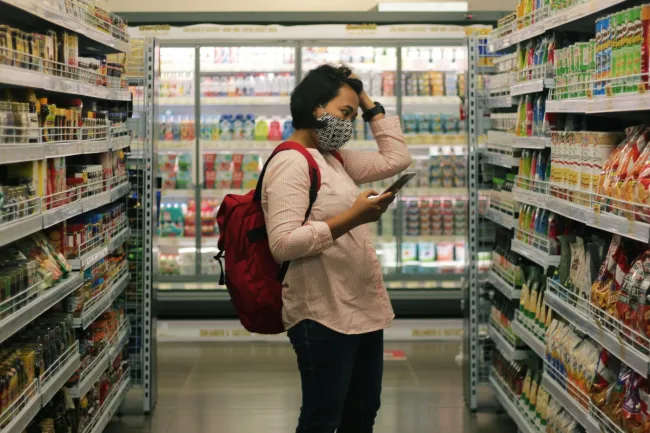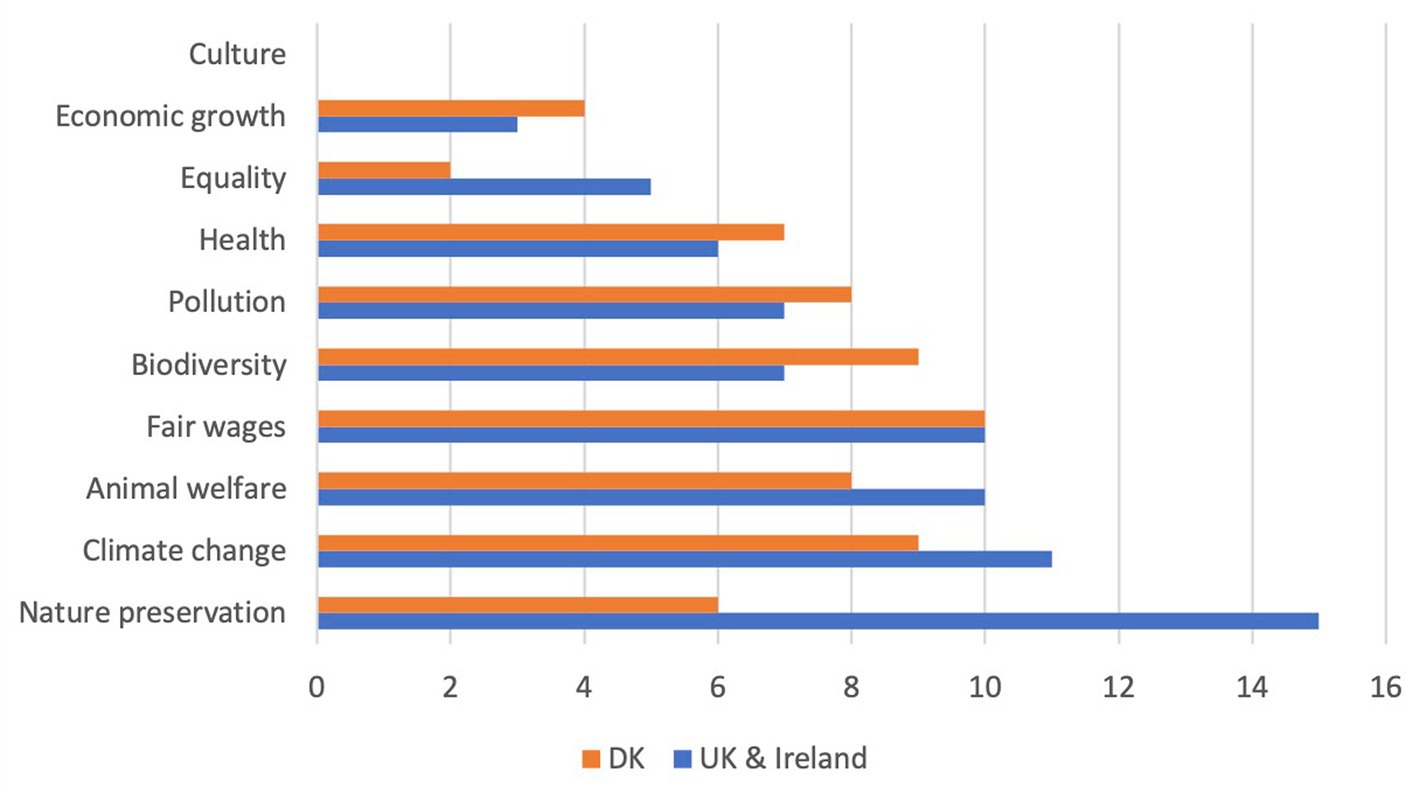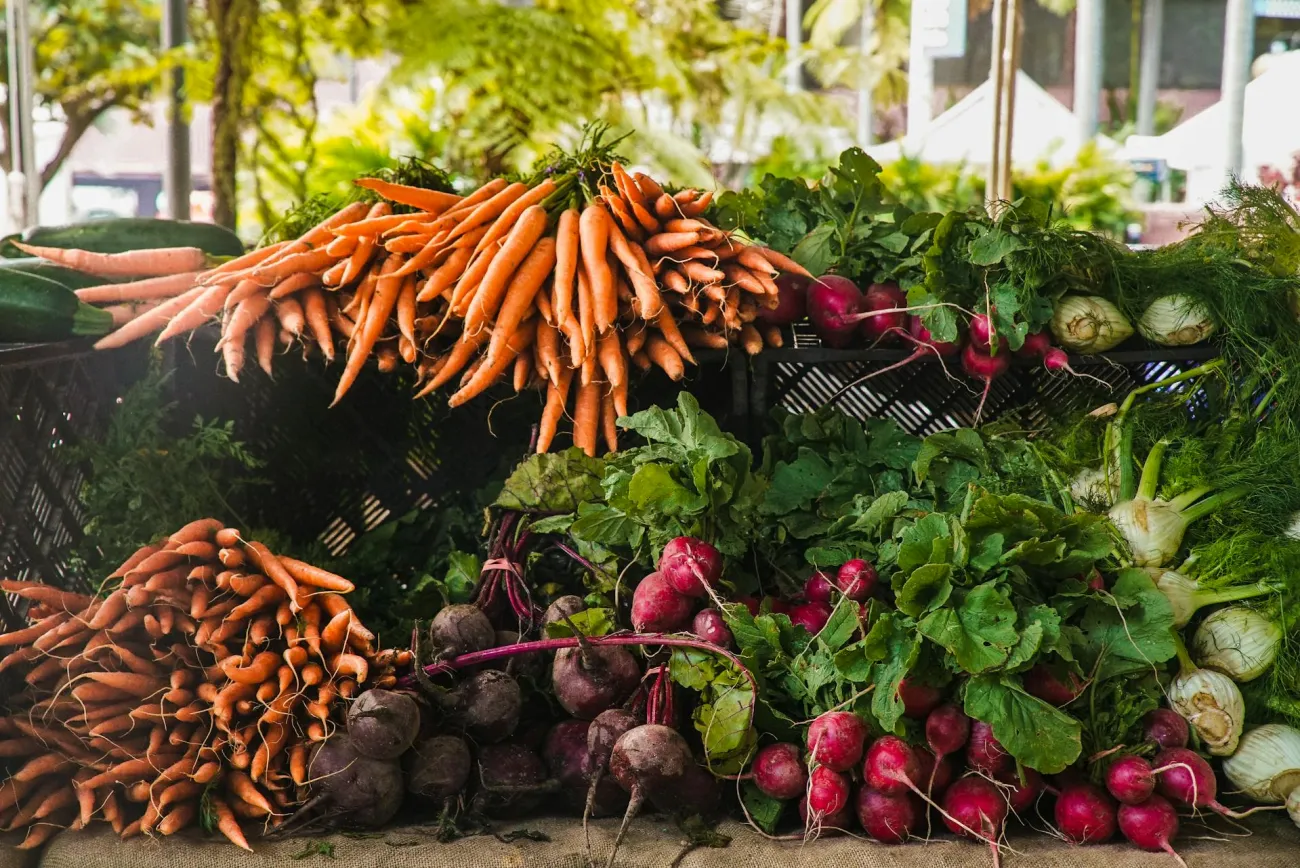This article aims to explore the consumer perceptions and preferences for sustainability in food production and food labels through interactive workshops conducted in the UK, Ireland, and Denmark. The researchers find that consumers lack necessary information to assess the sustainability of food products. Consumers in this study said that food retailers and producers must take more responsibility for providing public information and awareness campaigns.

Summary
Researchers have found strong links between dietary behaviours and climate change impacts. Easily understandable food labelling has been promoted by the EU Policy program and is expected to contribute to consumer’s ability to make informed choices regarding the sustainability of food at the point of sale. Effective food labelling, that reaches not only a minority of highly educated food consumers but a majority of consumers, is a complex issue. The authors of this article consider the sustainability of food production across multiple indicators, food label design choices, regulatory conditions and policy debates, and consumer education. The authors indicate the importance of assessing where a consumer's current level of understanding of food sustainability sits. Hence this paper’s objective of providing insights on how sustainability indicators can be communicated to consumers of food products in pursuit of more sustainable food choices.
The researchers conducted online consumer workshops with forty-seven participants in three European countries: the UK, Ireland, and Denmark. These workshops spanned two weeks and were designed to be interactive and creative. The authors aimed to obtain a deeper understanding of consumers’ knowledge, attitudes, and preferences regarding sustainability labels on food products. They also sought to elucidate the reported barriers to the participant’s ability to buy sustainable food and gain a clearer picture on what information the participants would like to see on a sustainability label.
Participants were asked to complete visual and written tasks related to perception and preference for sustainability. The researchers sought to assess consumer perception and preference of common environmental and social sustainability indicators, or symbols used to promote sustainable products. In other words, they wanted to gauge how participants responded to visual cues such as icons of solar panels or wind turbines, which are often associated with sustainability, relative to each other. Finally, preferences regarding a sustainability food label were examined through a label assessment and creation process where participants attempted to produce novel sustainability labels themselves modelled from an examination of current healthy food labels.
These methods were used to prompt increased engagement and trigger new perspectives on the food labelling issue. Results from the assessment of indicators of sustainability can be seen in Figure 1, which shows respondents' top three indicators, or the top three concerns or respondents, split by country and chosen from a pre-set list of ten indicators.

Figure 1: Top three sustainability indicator choices from participants split by region of study
The authors find that participants of this study had a basic knowledge of sustainability indicators relating to issues such as renewable energy, fair wages, animal welfare, and local produce. The results of this research, according to the authors, indicate that participants struggled with assessing the relative importance of different indicators of sustainability against others to arrive at an overall conclusion of the sustainability of specific food products. The researchers note their findings contribute to other research which has found environmental sustainability indicators prompt greater consumer reflection than social sustainability indicators. Meaning consumers are impacted to a greater extent by visual cues associated with the environment than those associated with social sustainability such as culture or equality.
The authors noted that participants believed that current sustainability labelling lacked the necessary information required to make informed decisions. The authors identify an opportunity for producers to inform consumers about their products’ sustainability but highlight key limitations, including difficulties in reaching food sector stakeholder agreement on consistent application across all food products.
Overall, the researchers found that participants perceived the task of providing adequate food product sustainability labels extremely difficult without knowledge of several sustainable indicators related to the life cycle of food products. The researchers connect this finding with participants' reported sense that producers, retailers, and policy makers must take more responsibility for communicating sustainability of food products in order to facilitate responsible consumer behaviour.
This study was limited by size and scope, but as a qualitative endeavour contributes to discussions of consumer preferences and perception of sustainability of food products. The authors suggest future research may explore more generalisable findings through representative cross-sectional surveys and online choice experiments with consumers in wider geographic regions such as the EU. The authors note that despite the lack of generalizability of their study, their contribution is still valuable to policy makers and label developers to understand where UK, Irish, and Danish consumers struggle the most in interpreting sustainable food product labelling. Specifically, they find that consumers lack basic knowledge of sustainability, they struggle to weigh sustainability indicators against one another, and they found that creating an easily readable sustainability summary label is difficult. Their findings may contribute to the difficult task of creating a holistic, multi-dimensional sustainability summary food label that is easily readable and understandable across all twenty-seven member states of the EU.
Abstract
Introduction: Changes in consumers’ decision-making relating to food play an important role in the sustainable transition of the food system. However, assessing sustainability across choice alternatives is complex. A holistic or multi-dimensional ‘summary’ sustainability label for food could help consumers make more informed choices, but it is important that such a label is developed taking consumers’ perception and understanding of sustainability into consideration. Hence, it is necessary to understand consumers’ needs and wants in a sustainability food label. The objective of this study is therefore to explore in-depth consumer perceptions and preferences for sustainability as a concept in food production as well as for a sustainability label for food. A total of six online co-creation workshops were carried out in the UK and Ireland (3 groups, n = 24) and Denmark (3 groups, n = 21) using an interactive platform, where participants over the course of two weeks discussed and engaged in creative tasks related to food and sustainability. Results show that consumers lack information about the sustainability of food products. There were differences with regards to which of 10 pre-tested indicators of sustainability (nature preservation, climate change, animal welfare, fair wages, biodiversity, pollution, health, equality, economic growth and culture) were perceived as most important. The information participants discussed as relevant for a sustainability label included transportation, the degree of processing, and packaging, with some country differences. Consumers acknowledged the complexity of designing and understanding a sustainability food label and existing nutrition labels served as inspiration for creating a sustainability label. Consumers recommended more responsibility to be taken by retailers and food producers through public information campaigns to create awareness. Pros and cons of co-creating a sustainability label with consumers online are discussed as well as the implications for consumers, the food industry and policy makers.
Reference
Pedersen, S., Benson, T., Tsalis, G., Futtrup, R., Dean, M., Aschemann-Witzel, J., 2024. What consumers want in a sustainability food label: Results from online co-creation workshops in the United Kingdom, Ireland and Denmark. Frontiers in Sustainability 4.
Read the full article here. See also the TABLE publications What is a sustainable healthy diet?, What is a healthy sustainable eating pattern? and What can be done to shift eating patterns in healthier, more sustainable directions?




Comments (0)